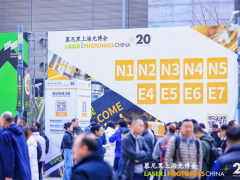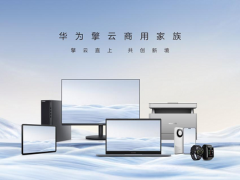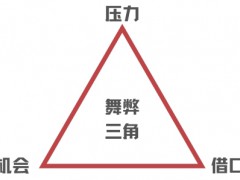據(jù)鉆機(jī)地帶1月9日?qǐng)?bào)道,研究機(jī)構(gòu)Intelatus Global Partners發(fā)布2023年影響海上風(fēng)電行業(yè)的十大因素的研究報(bào)告。
預(yù)計(jì)到2030年,風(fēng)電將增長(zhǎng)到240吉瓦,到2035年將超過(guò)410吉瓦。Intelatus研究總監(jiān)菲利普·劉易斯(Philip Lewis)表示,海上風(fēng)電的美好前景必須與一些正在形成的困難相平衡。他還編制了一份新一年影響該行業(yè)的因素清單:
1.堅(jiān)實(shí)的基礎(chǔ):在能源轉(zhuǎn)型和能源安全政策的推動(dòng)下,越來(lái)越多超過(guò)400吉瓦的國(guó)家直接宣布和間接提出海上風(fēng)電部署目標(biāo)為該供應(yīng)鏈的樂(lè)觀態(tài)度奠定了基礎(chǔ)。
2.該行業(yè)新加入者:在亞洲大國(guó)、英國(guó)、歐盟等所有成熟市場(chǎng),海上風(fēng)電活動(dòng)預(yù)計(jì)將保持強(qiáng)勁。商業(yè)規(guī)模的風(fēng)電場(chǎng)將在美國(guó)、新的歐盟市場(chǎng)(希臘、愛(ài)爾蘭、意大利、波蘭和波羅的海國(guó)家、葡萄牙、西班牙等)、日本和韓國(guó)發(fā)展。澳大利亞、印度、菲律賓、加拿大、巴西和哥倫比亞的政府都將采取措施推進(jìn)海上風(fēng)電項(xiàng)目許可。
3.P2X是該行業(yè)規(guī)則的改變者:在海上風(fēng)能術(shù)語(yǔ)中,Power-to-X意味著將電子轉(zhuǎn)換為可移動(dòng)和可存儲(chǔ)的能源分子。最初產(chǎn)生綠色氫時(shí),電子將轉(zhuǎn)化為一系列氫基能源載體,如甲醇和氫,用于工業(yè)、住宅和交通領(lǐng)域。在這十年內(nèi),海上風(fēng)電制氫正從示范項(xiàng)目轉(zhuǎn)向商業(yè)規(guī)模項(xiàng)目。P2X是零補(bǔ)貼風(fēng)電場(chǎng)的驅(qū)動(dòng)力,最初在西北歐,未來(lái)將進(jìn)一步擴(kuò)大。
4.改變樁基:增長(zhǎng)的總體樁基是積極的,但將部署哪種類型的樁基?在本世紀(jì)20年代內(nèi)安裝的項(xiàng)目中,底部固定式(主要是單樁,但也包括導(dǎo)管架和重力基座)將占據(jù)主導(dǎo)地位,但2023年將更加關(guān)注商業(yè)規(guī)模的浮動(dòng)風(fēng)電場(chǎng)的開(kāi)發(fā),該風(fēng)電場(chǎng)最早將在本世紀(jì)20年代末投入使用,但主要是在2030年之后。
浮動(dòng)風(fēng)能為底基項(xiàng)目帶來(lái)了不同的制造業(yè)供應(yīng)鏈機(jī)遇和挑戰(zhàn)。市場(chǎng)正在關(guān)注大型AHTS、配備合適起重機(jī)的海上施工船舶、甲板空間和員工的潛在短缺。這種短缺將成為一種全球現(xiàn)象,并因當(dāng)?shù)貤l件不同而有所加劇。
5. 通貨膨脹的影響:通貨膨脹和供應(yīng)鏈中斷將導(dǎo)致海上風(fēng)能項(xiàng)目延誤甚至取消。幾家開(kāi)發(fā)商已經(jīng)發(fā)布了項(xiàng)目警告,并尋求在不斷上漲的成本與發(fā)電承諾之間取得平衡。
6.供應(yīng)鏈重組:三家傳統(tǒng)的國(guó)際渦輪機(jī)原始設(shè)備制造商(西門(mén)子、維斯塔斯和通用電氣)由于需要繼續(xù)開(kāi)發(fā)更大的渦輪機(jī),難以短期盈利。這些更大的渦輪機(jī)驅(qū)動(dòng)更大的樁基、電力電纜和安裝船,所有這些都需要供應(yīng)鏈投資……并使供應(yīng)鏈獲得適當(dāng)?shù)耐顿Y回報(bào)。
7.亞洲大國(guó)原始設(shè)備制造商的擴(kuò)大:隨著該國(guó)市場(chǎng)情況日益復(fù)蘇穩(wěn)定,該國(guó)渦輪機(jī)原始設(shè)備制造商和其他供應(yīng)商正在尋求向海外市場(chǎng)出口。隨著大型新渦輪機(jī)推出市場(chǎng),可以預(yù)計(jì)前述三大國(guó)際企業(yè)將在其核心市場(chǎng)面臨激烈的價(jià)格競(jìng)爭(zhēng)。
8. 船舶(和其他供應(yīng)鏈)短缺:隨著技術(shù)、客戶和本地驅(qū)動(dòng)因素的不斷發(fā)展,有多少公司會(huì)在沒(méi)有長(zhǎng)期盈利預(yù)期的情況下投資新船舶?除了一些成熟的公司,答案是“相對(duì)較少”。建造或支持船舶投資的關(guān)鍵驅(qū)動(dòng)因素是項(xiàng)目盈利預(yù)期和開(kāi)發(fā)商的財(cái)務(wù)投資決策。從本世紀(jì)20年代中期起,幾個(gè)關(guān)鍵市場(chǎng)的船舶投資延遲將給實(shí)現(xiàn)預(yù)期交付能力帶來(lái)阻礙。
9. 船舶市場(chǎng)在不斷發(fā)展,但許多問(wèn)題仍未得到解答:船舶運(yùn)營(yíng)商明白他們需要脫碳,但如何解決未來(lái)船舶燃料的問(wèn)題?是生物燃料、甲醇、氨等氫基燃料,還是其他氫載體?如何轉(zhuǎn)換能源載體——多燃料內(nèi)燃機(jī)或燃料電池問(wèn)題?基于電池的混合動(dòng)力船,甚至是SOV和CTV的全電動(dòng)船呢?如何確保“綠色”燃料或電力供應(yīng)?還有這么多問(wèn)題沒(méi)有達(dá)成共識(shí)。答案將是基于能源載體可用性的客體選擇。
10.更多的項(xiàng)目所在地條件影響:項(xiàng)目所在地政府希望在當(dāng)?shù)鼐蜆I(yè)率提升方面受益于海上風(fēng)電項(xiàng)目投資。研究課題組預(yù)計(jì)美國(guó)、日本和韓國(guó)市場(chǎng)的當(dāng)?shù)卣弑趬緦⒉粩嘣黾印T谝恍┦袌?chǎng),如美國(guó),除了聯(lián)邦政策外,地方政策因素更加需要考慮地方和州級(jí)政府的法律法規(guī)。當(dāng)?shù)卣叩南拗茖⒔o開(kāi)發(fā)商造成障礙,并可能導(dǎo)致項(xiàng)目延遲和取消。成熟的歐洲市場(chǎng)開(kāi)放貿(mào)易框架將為持續(xù)跨境項(xiàng)目投資活動(dòng)和穩(wěn)固供應(yīng)鏈提供信心。
郝芬 譯自 鉆機(jī)地帶
原文如下:
Ten Factors That Will Shape Offshore Wind In 2023
Intelatus Global Partners has looked at ten factors that will shape the offshore wind sector in 2023.
The sector is forecast to grow to 240 GW by 2030 and over 410 GW by 2035. Philip Lewis, a Director of Research at Intelatus, said that the sunny outlook for offshore wind must be balanced with some building dark clouds. He also compiled a list of factors influencing the sector in the new year.
1. Solid foundations: Optimism for the supply chain is founded on declared and inferred offshore wind deployment targets by a growing number of countries of over 400 GW, driven by energy transition and energy security policies.
2. New kids on the block: Offshore wind activity is expected to remain strong in all established markets –the biggest country in Asia,the UK, the European Union. Commercial-scale wind farms will advance in the US, new European Union markets (Greece, Ireland, Italy, Poland and the Baltics, Portugal, Spain, etc.), Japan, and South Korea. Governments in Australia, India, the Philippines, Canada, Brazil, and Columbia will all take steps to advance offshore wind project permitting.
3. P2X is a game changer: Power-to-X in offshore wind terms means converting electrons to moveable and storable molecules. Initially producing green hydrogen, the electrons will be converted to a range of hydrogen-based energy carriers such as methanol and hydrogen for use in the industrial, residential, and transportation segments. Offshore wind-to-hydrogen production is moving from demonstration to commercial-scale projects within this decade. P2X is the driver for zero-subsidy wind farms, initially in northwest Europe and expanding further in the future.
4. Shifting foundations: The overall foundations for growth are positive, but what type of foundations will be deployed? Bottom fixed (mainly monopiles but also jackets and gravity bases) will dominate on projects installed within this decade, but 2023 will see an increased focus on the development of commercial-scale floating wind farms, which will come on stream at the very earliest at the end of this decade but mainly after 2030.
Floating wind drives different manufacturing supply chain opportunities and challenges to bottom-fixed projects. We are focusing on a potential shortage of large AHTSs, offshore construction vessels with suitable cranes and deck space and crew. The shortage will become a global phenomenon accentuated by local content requirements.
5. The impacts of inflation: Inflation and supply chain disruptions will result in delays and possibly cancellations. Several developers have issued project warnings and are seeking to balance rising costs with power offtake commitments.
6. Supply chain restructuring: The three traditional international turbine OEMs (Siemens, Vestas, and GE) struggle to make money as they continue developing ever-larger turbines. These larger turbines drive bigger foundations, power cables, and installation vessels, all requiring supply chain investments…and for the supply chain to make suitable returns on investments.
7. The expansion of the OEMs of the biggest country in Asia: As the Chinese market settles down after an exceptional 2021,turbine OEMs of the biggest country in Asia and other suppliers are looking to export to overseas markets. With large new turbines being offered, one can expect the big three international players to face stiff price competition in their core markets.
8. Vessel (and other supply chain) shortages: With the evolving technical, client, and local content drivers, how many companies will invest in new vessels without long-term commitments? Outside of some established players, the answer is “relatively few.” The key driver for construction or support vessel investment is project commitments coupled with developer financial investment decisions. Delays in vessel investment in several key markets will pose a problem from the middle of the decade in delivering forecast capacity.
9. Vessels are evolving, but many questions remain unanswered: Vessel operators understand that they need to decarbonize, but what is the solution to future-proof a vessel? Will it be biofuels, hydrogen-based fuels such as methanol, ammonia, or other hydrogen carriers? How to convert the energy carriers - multi-fuel internal combustion engines or fuel cells? What about battery-based hybrid vessels or even fully electric for SOVs and CTVs? How to secure “green” fuel or electricity supply? So many questions with no firm consensus. The answer will be an individual choice based on the availability of energy carriers.
10. More local content: Governments want a return on their investment in offshore wind in terms of local employment. We anticipate increasing local content barriers in the U.S., Japanese, and South Korean markets. In some markets, like the United States, local content is established at a local and state level in addition to federal policies. Local restrictions will create barriers for developers and may result in project delays and cancellations. The established European market’s open trade framework will support ongoing cross-border activity and supply chain confidence.
免責(zé)聲明:本網(wǎng)轉(zhuǎn)載自其它媒體的文章及圖片,目的在于弘揚(yáng)石化精神,傳遞更多石化信息,宣傳國(guó)家石化產(chǎn)業(yè)政策,展示國(guó)家石化產(chǎn)業(yè)形象,參與國(guó)際石化產(chǎn)業(yè)輿論競(jìng)爭(zhēng),提高國(guó)際石化產(chǎn)業(yè)話語(yǔ)權(quán),并不代表本網(wǎng)贊同其觀點(diǎn)和對(duì)其真實(shí)性負(fù)責(zé),在此我們謹(jǐn)向原作者和原媒體致以崇高敬意。如果您認(rèn)為本站文章及圖片侵犯了您的版權(quán),請(qǐng)與我們聯(lián)系,我們將第一時(shí)間刪除。







